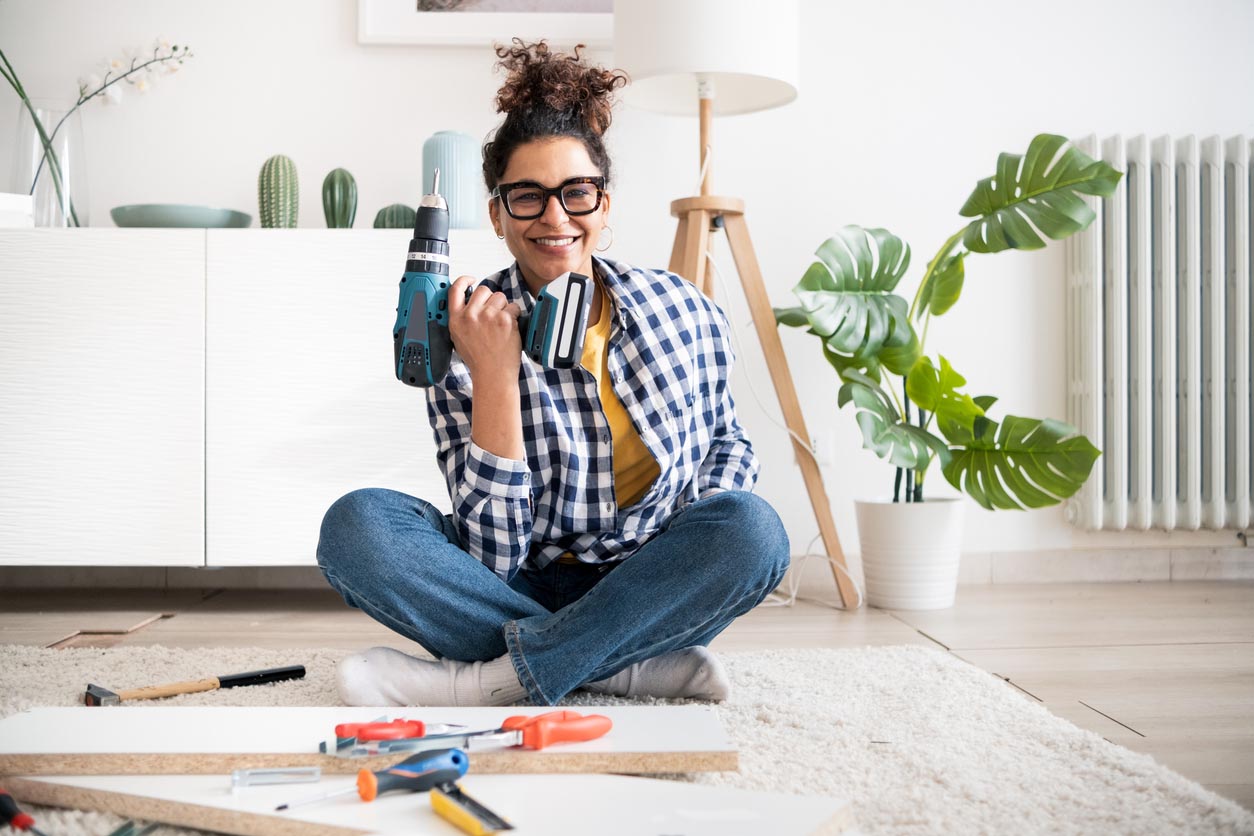Embarking on DIY home improvement projects can be both rewarding and cost-effective. Whether you are looking to enhance the aesthetics of your living space or increase the functionality of your home, these tips will guide you through some essential projects. From minor updates to more significant renovations, these ideas will help you transform your home efficiently and stylishly.

Planning and Preparation
Define Your Goals
Before starting any project, clearly define your goals. Determine what you want to achieve, whether it’s upgrading a room’s appearance, improving energy efficiency, or adding new functionality. Having a clear vision will help you stay focused and organized.
Budgeting and Materials
Establish a budget to avoid overspending. Research the cost of materials and tools needed for your project. Purchase high-quality supplies to ensure durability and a professional finish. Online marketplaces and local hardware stores often have competitive prices and seasonal discounts.
Essential Tools and Safety
Must-Have Tools
Invest in a basic toolkit if you don’t already have one. Essential tools include a hammer, screwdrivers, a tape measure, a level, pliers, a utility knife, and a power drill. Quality tools will make your work easier and more efficient.
Safety Precautions
Always prioritize safety. Wear protective gear such as gloves, goggles, and masks. Ensure your workspace is well-lit and ventilated. If working with electricity, turn off the power supply to avoid accidents.
Painting and Decorating
Choosing Colors
Selecting the right color scheme can dramatically change a room’s ambiance. Opt for lighter shades to make small spaces feel larger and darker hues to create a cozy atmosphere. Test paint samples on your walls to see how they look at different times of the day.
Wall Art and Accessories
Personalize your space with wall art and accessories. Use removable wallpaper or decals for a quick and easy update. Hang artwork or photographs to add character. Shelving units can display decorative items and also provide additional storage.
Flooring and Carpeting
Installing Laminate Flooring
Laminate flooring is a popular choice for DIY enthusiasts due to its ease of installation and affordability. Follow the manufacturer’s instructions carefully. Ensure the subfloor is clean and level before laying the laminate to avoid uneven surfaces.
Refreshing Carpets
Give your carpets a new lease on life by deep cleaning them. Use a carpet cleaner or rent a steam cleaner for a thorough clean. For stubborn stains, apply a mixture of vinegar and baking soda. Regular vacuuming will maintain the carpet’s appearance and longevity.
Kitchen and Bathroom Upgrades
Cabinet Makeovers
Revamp your kitchen or bathroom by updating the cabinets. Repainting or refinishing the cabinet doors can make a significant difference. Replacing the hardware, such as handles and knobs, can also add a fresh touch.
Installing Backsplashes
A new backsplash can transform your kitchen or bathroom. Peel-and-stick tiles are an easy and affordable option for a DIY project. They come in various styles and materials, allowing you to create a customized look without the need for professional installation.
Outdoor Enhancements
Garden Landscaping
Enhance your outdoor space with simple landscaping projects. Planting flowers, shrubs, or even starting a vegetable garden can improve the aesthetics of your yard. Mulching flower beds and trimming hedges will give your garden a well-maintained appearance.
Building a Deck
If you’re looking for a more ambitious project, consider building a deck. It provides additional outdoor living space and can increase the value of your home. Plan the design carefully, obtain necessary permits, and follow local building codes.
Energy Efficiency Improvements
Insulation and Sealing
Improving your home’s insulation can lead to significant energy savings. Seal gaps around windows and doors with weatherstripping or caulk. Add insulation to attics, basements, and crawl spaces to maintain a comfortable indoor temperature.
Upgrading to LED Lighting
Replace traditional incandescent bulbs with LED lights. They use less energy and have a longer lifespan. Install dimmer switches to control the lighting ambiance and reduce energy consumption further.
Conclusion
DIY home improvement projects can be a fulfilling way to personalize your living space and enhance its functionality. By planning carefully, using the right tools, and prioritizing safety, you can achieve professional-quality results. From painting and decorating to more extensive renovations, these tips will help you tackle various projects with confidence and creativity.